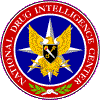
|
National
Drug Intelligence Center
Chicago High Intensity Drug Trafficking
Area Drug Market Analysis
May 2007
Strategic Drug Threat Developments
- Mexican drug trafficking organizations (DTOs) and criminal groups
dominate the transportation and wholesale distribution of illicit
drugs in the Chicago HIDTA region. These organizations operate as
national-level distributors of illicit drugs, particularly to midwestern
and eastern drug markets.
- African American and Hispanic street gangs such as Gangster
Disciples, Vice Lords, and Latin Kings dominate the retail distribution
of cocaine, heroin, and marijuana in the HIDTA region. These street
gangs are prevalent in urban areas and are becoming more active
in suburban Chicago communities.
- Some street gang members have relocated their residences to
suburban communities but still maintain control of drug markets
in the city of Chicago, where most illicit drug sales occur. Increasingly,
gang members distribute drugs inside residences or commercial properties,
regularly changing sales locations in response to the Chicago Police
Department's effective street corner initiatives that target open-air
drug markets. The frequent relocation of indoor markets makes them
inherently more difficult for law enforcement to penetrate than
traditional open-air markets.
- The ready availability and widespread abuse of illicit drugs
in the Chicago HIDTA region contribute to the area's violent crime
rate; drug distributors and abusers commit a host of violent crimes,
including homicide, kidnapping, assault, and intimidation.
- The Chicago HIDTA region is a distribution center for clandestinely
produced fentanyl, a synthetic opioid that is more potent than heroin.
Fentanyl is sold alone or in combination with heroin; it is marketed
in Chicago and is also distributed in other areas that receive heroin
supplies from Chicago, particularly Michigan. Fentanyl and heroin/fentanyl
combinations have been associated with hundreds of overdoses and
deaths in the Chicago HIDTA region and in Michigan.
|
Drug Trafficking
Organizations, Criminal Groups, and Gangs
Drug trafficking organizations are complex
organizations with highly defined command-and-control structures
that produce, transport, and/or distribute large quantities
of one or more illicit drugs.
Criminal groups operating in the United States
are numerous and range from small to moderately sized, loosely
knit groups that distribute one or more drugs at the retail
and midlevels.
Gangs are defined by the National Alliance of
Gang Investigators' Associations as groups or associations
of three or more persons with a common identifying sign,
symbol, or name, the members of which individually or collectively
engage in criminal activity that creates an atmosphere of
fear and intimidation.
|
To Top
To Contents
To Next Page
To Publications Page
To Home Page
|

